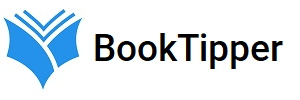Featured Non-Fiction & Biography
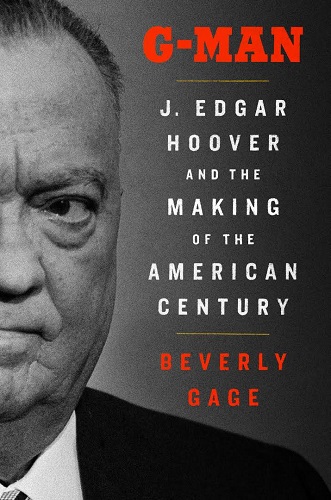
G-MAN
by Beverly Gage
“[A] crisply written, prodigiously researched, and frequently astonishing new biography”—The New Yorker
“Masterful…This book is an enduring, formidable accomplishment, a monument to the power of biography [that] now becomes the definitive work”—The Washington Post
“Revelatory…an acknowledgment of the complexities that made Hoover who he was, while charging the turbulent currents that eventually swept him aside.” —The New York Times
NEW YORK TIMES NOTABLE BOOK FOR 2020
The Washington Post “Top Ten Books of 2022”
Publishers Weekly * “Top Ten Books of 2022”
A major new biography of J Edgar Hoover that draws from never-before-seen sources to create a groundbreaking portrait of a colossus who dominated half a century of American history and planted the seeds for much of today’s conservative political landscape.
We remember him as a bulldog–squat frame, bulging wide-set eyes, fearsome jowls–but in 1924, when he became director of the FBI, he had been the trim, dazzling wunderkind of the administrative state, buzzing with energy and big ideas for reform. He transformed a failing law-enforcement backwater, riddled with scandal, into a modern machine. He believed in the power of the federal government to do great things for the nation and its citizens. He also believed that certain people–many of them communists or racial minorities or both– did not deserve to be included in that American project. Hoover rose to power and then stayed there, decade after decade, using the tools of state to create a personal fiefdom unrivaled in U.S. history.
Beverly Gage’s monumental work explores the full sweep of Hoover’s life and career, from his birth in 1895 to a modest Washington civil-service family through his death in 1972. In her nuanced and definitive portrait, Gage shows how Hoover was more than a one-dimensional tyrant and schemer who strong-armed the rest of the country into submission. As FBI director from 1924 through his death in 1972, he was a confidant, counselor, and adversary to eight U.S. presidents, four Republicans and four Democrats. Franklin Roosevelt and Lyndon Johnson did the most to empower him, yet his closest friend among the eight was fellow anticommunist warrior Richard Nixon. Hoover was not above blackmail and intimidation, but he also embodied conservative values ranging from anticommunism to white supremacy to a crusading and politicized interpretation of Christianity. This garnered him the admiration of millions of Americans. He stayed in office for so long because many people, from the highest reaches of government down to the grassroots, wanted him there and supported what he was doing, thus creating the template that the political right has followed to transform its party.
G-Man places Hoover back where he once stood in American political history–not at the fringes, but at the center–and uses his story to explain the trajectories of governance, policing, race, ideology, political culture, and federal power as they evolved over the course of the 20th century.

HOW TO STAND UP TO A DICTATOR
by Maria Ressa
From the recipient of the 2021 Nobel Peace Prize, an impassioned and inspiring memoir of a career spent holding power to account.
Maria Ressa is one of the most renowned international journalists of our time. For decades, she challenged corruption and malfeasance in her native country, the Philippines, on its rocky path from an authoritarian state to a democracy. As a reporter from CNN, she transformed news coverage in her region, which led her in 2012 to create a new and innovative online news organization, Rappler. Harnessing the emerging power of social media, Rapplercrowdsourced breaking news, found pivotal sources and tips, harnessed collective action for climate change, and helped increase voter knowledge and participation in elections.
But by their fifth year of existence, Rappler had gone from being lauded for its ideas to being targeted by the new Philippine government, and made Ressa an enemy of her country’s most powerful man: President Duterte. Still, she did not let up, tracking government seeded disinformation networks which spread lies to its own citizens laced with anger and hate. Hounded by the state and its allies using the legal system to silence her, accused of numerous crimes, and charged with cyberlibel for which she was found guilty, Ressa faces years in prison and thousands in fines.
There is another adversary Ressa is battling. How to Stand Up to a Dictator is also the story of how the creep towards authoritarianism, in the Phillipines and around the world, has been aided and abetted by the social media companies. Ressa exposes how they have allowed their platforms to spread a virus of lies that infect each of us, pitting us against one another, igniting, even creating, our fears, anger, and hate, and how this has accelerated the rise of authoritarians and dictators around the world. She maps a network of disinformation—a heinous web of cause and effect—that has netted the globe: from Duterte’s drug wars to America’s Capitol Hill; Britain’s Brexit to Russian and Chinese cyber-warfare; Facebook and Silicon Valley to our own clicks and votes.
Democracy is fragile. How to Stand Up to a Dictator is an urgent cry for Western readers to recognize and understand the dangers to our freedoms before it is too late. It is a book for anyone who might take democracy for granted, written by someone who never would. And in telling her dramatic and turbulent and courageous story, Ressa forces readers to ask themselves the same question she and her colleagues ask every day: What are you willing to sacrifice for the truth?

BUTTS: A BACKSTORY
*ONE OF THE MOST ANTICIPATED BOOKS OF FALL: Esquire, Time, LitHub, The Every Girl, BookPage*
“Lively and thorough, Butts is the best kind of nonfiction—the kind that forces you to see something ordinary through completely new eyes.” —Esquire, Best Books of 2022 So Far
“One of the year’s most ingenious and eye-opening cultural studies.” —Publishers Weekly, Best Books of 2022
Whether we love them or hate them, think they’re sexy, think they’re strange, consider them too big, too small, or anywhere in between, humans have a complicated relationship with butts. It is a body part unique to humans, critical to our evolution and survival, and yet it has come to signify so much more: sex, desire, comedy, shame. A woman’s butt, in particular, is forever being assessed, criticized, and objectified, from anxious self-examinations trying on jeans in department store dressing rooms to enduring crass remarks while walking down a street or high school hallways. But why? In Butts: A Backstory, reporter, essayist, and RadioLab contributing editor Heather Radke is determined to find out.
Spanning nearly two centuries, this “whip-smart” (Publishers Weekly, starred review) cultural history takes us from the performance halls of 19th-century London to the aerobics studios of the 1980s, the music video set of Sir Mix-a-Lot’s “Baby Got Back” and the mountains of Arizona, where every year humans and horses race in a feat of gluteal endurance. Along the way, she meets evolutionary biologists who study how butts first developed; models whose measurements have defined jean sizing for millions of women; and the fitness gurus who created fads like “Buns of Steel.” She also examines the central importance of race through figures like Sarah Bartmann, once known as the “Venus Hottentot,” Josephine Baker, Jennifer Lopez, and other women of color whose butts have been idolized, envied, and despised.
Part deep dive reportage, part personal journey, part cabinet of curiosities, Butts is an entertaining, illuminating, and thoughtful examination of why certain silhouettes come in and out of fashion—and how larger ideas about race, control, liberation, and power affect our most private feelings about ourselves and others.
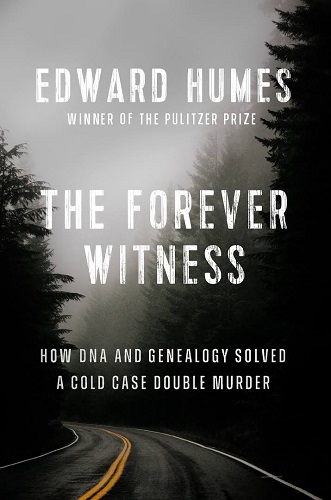
THE FOREVER WITNESS
by Edward Humes
*”Stellar true crime”—Publishers Weekly (starred review)
*”Suspenseful… Fascinating… A winner…”—Booklist (starred review)
A relentless detective and an amateur genealogist solve a haunting cold case—and launch a crime-fighting revolution that tests the fragile line between justice and privacy.
In November 1987, a young couple on an overnight trip to Seattle vanished without a trace. A week later, the bodies of Tanya Van Cuylenborg and her boyfriend Jay Cook were found in rural Washington. It was a brutal crime, and it was the perfect crime: With few clues and no witnesses, an international manhunt turned up empty, and the sensational case that shocked the Pacific Northwest gradually slipped from the headlines.
In deep-freeze, long-term storage, biological evidence from the crime sat waiting, as Detective Jim Scharf poured over old case files looking for clues his predecessors missed. Meanwhile, 1,200 miles away in California, CeCe Moore began her lifelong fascination with genetic genealogy, a powerful forensic tool that emerged not from the crime lab, but through the wildly popular home DNA ancestry tests purchased by more than 40 million Americans. When Scharf decided to send the cold case’s decades-old DNA to Parabon NanoLabs, he hoped he would finally bring closure to the Van Cuylenborg and Cook families. He didn’t know that he and Moore would make history.
Genetic genealogy, long the province of family tree hobbyists and adoptees seeking their birth families, has made headlines as a cold case solution machine, capable of exposing the darkest secrets of seemingly upstanding citizens. In the hands of a tenacious detective like Scharf, genetic genealogy has solved one baffling killing after another. But as this crime-fighting technique spreads, its sheer power has sparked a national debate: Can we use DNA to catch the murderers among us, yet still protect our last shred of privacy in the digital age—the right to the very blueprint of who we are?

THE LIGHTHOUSE OF STALINGRAD
by Iain MacGregor
A thrilling, vivid, and highly detailed account of the epic siege during one of World War II’s most important battles, told by the brilliant British editor-turned-historian and author of Checkpoint Charlie, Iain MacGregor.
To the Soviet Union, the sacrifices that enabled the country to defeat Nazi Germany in World War II are sacrosanct. The foundation of the Soviets’ hard-won victory was laid during the battle for the city of Stalingrad, resting on the banks of the river Volga. To Russians it was a pivotal landmark of their nation’s losses, with more than two million civilians and combatants either killed, wounded, or captured during the bitter fighting from September 1942 to February 1943. Both sides endured terrible conditions in brutal, relentless house-to-house fighting.
Within this life-and-death struggle, Soviet war correspondents lauded the fight for a key strategic building in the heart of the city, “Pavlov’s House,” which was situated on the frontline and codenamed “The Lighthouse.” The legend grew of a small garrison of Russian soldiers from the 13th Guards Rifle Division holding out against the Germans of the Sixth Army, which had battled its way to the very center of Stalingrad. A report about the battle in a local Red Army newspaper would soon grow and be repeated on Moscow radio and in countless national newspapers. By the end of the war, the legend would gather further momentum and inspire Russians to rebuild their destroyed towns and cities.
This story has become a pillar of the Stalingrad legend and one that can now be analyzed and told accurately. The Lighthouse of Stalingrad sheds new light on this iconic battle through the prism of the two units who fought for the very heart of the city itself. Iain MacGregor traveled to both German and Russian archives to unearth previously unpublished testimonies by soldiers on both sides of the conflict. His riveting narrative lays to rest the questions as to the identity of the real heroes of this epic battle for one of the city’s most famous buildings and provides authoritative answers as to how the battle finally ended and influenced the conclusion of the siege of Stalingrad.
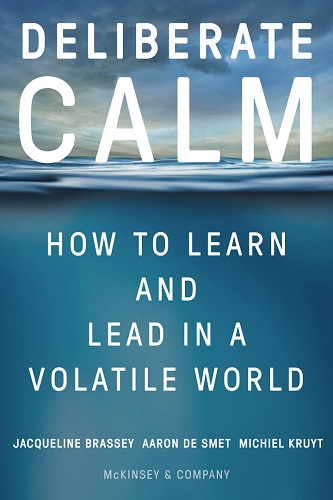
DELIBERATE CALM
by Jacqueline Brassey, Aaron DeSmet, & Michiel Kruyt
A trio of McKinsey & Company veterans draws from a unique combination of psychology, neuroscience, and consciousness practices plus a combined 50-plus years of international board room experience to offer a unique approach to learning and leading with awareness and intentional choice, even amidst the most challenging circumstances.
As the speed of change in our increasingly complex world accelerates daily, leaders are tasked with performing outside of their familiar zones both in their personal and professional lives. This requires us to adapt. Yet, the same conditions that make adapting so important can also trigger fear, leading us to resist change and default to reactive behavior. The authors call this the “adaptability paradox”: when we most need to learn and change, we stick with what we know, often in ways that stifle learning and innovation. To avoid this trap, leaders must become proactive so they can lead ahead of the curve.
Enter Deliberate Calm, a tangible guide that combines cutting-edge neuroscience, psychology, and consciousness practices, along with the authors’ decades of experience working with leaders around the globe. By practicing Dual Awareness, which integrates our internal and external experiences, leaders can become fluid and respond to challenges with intentional choice instead of being limited by their old success models. With Deliberate Calm, anyone can lead and learn with awareness and choice to realize their full potential, even in times of uncertainty, complexity, and change.
Still Hot in Non-Fiction & Biography

FRIENDS, LOVERS, AND THE BIG TERRIBLE THING
by Matthew Perry
INSTANT #1 NEW YORK TIMES BESTSELLER
#1 INTERNATIONAL BESTSELLER
The BELOVED STAR OF FRIENDS takes us behind the scenes of the hit sitcom and his struggles with addiction in this “CANDID, DARKLY FUNNY…POIGNANT” memoir (The New York Times)
A MOST ANTICIPATED BOOK by Time, Associated Press, Goodreads, USA Today, and more!
“Hi, my name is Matthew, although you may know me by another name. My friends call me Matty. And I should be dead.”
So begins the riveting story of acclaimed actor Matthew Perry, taking us along on his journey from childhood ambition to fame to addiction and recovery in the aftermath of a life-threatening health scare. Before the frequent hospital visits and stints in rehab, there was five-year-old Matthew, who traveled from Montreal to Los Angeles, shuffling between his separated parents; fourteen-year-old Matthew, who was a nationally ranked tennis star in Canada; twenty-four-year-old Matthew, who nabbed a coveted role as a lead cast member on the talked-about pilot then called Friends Like Us. . . and so much more.
In an extraordinary story that only he could tell―and in the heartfelt, hilarious, and warmly familiar way only he could tell it―Matthew Perry lays bare the fractured family that raised him (and also left him to his own devices), the desire for recognition that drove him to fame, and the void inside him that could not be filled even by his greatest dreams coming true. But he also details the peace he’s found in sobriety and how he feels about the ubiquity of Friends, sharing stories about his castmates and other stars he met along the way. Frank, self-aware, and with his trademark humor, Perry vividly depicts his lifelong battle with addiction and what fueled it despite seemingly having it all.
Friends, Lovers, and the Big Terrible Thing is an unforgettable memoir that is both intimate and eye-opening―as well as a hand extended to anyone struggling with sobriety. Unflinchingly honest, moving, and uproariously funny, this is the book fans have been waiting for.
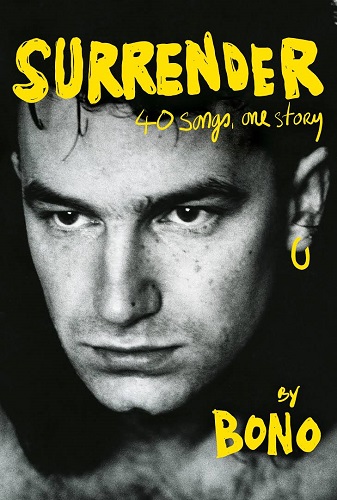
SURRENDER: 40 SONGS, 1 STORY
by Bono
NEW YORK TIMES BEST SELLER • Bono—artist, activist, and the lead singer of Irish rock band U2—has written a memoir: honest and irreverent, intimate and profound, Surrender is the story of the remarkable life he’s lived, the challenges he’s faced, and the friends and family who have shaped and sustained him.
“Surrender soars whenever the spotlight comes on. Bono is never more powerful, on the page or the stage, than when he strives for the transcendence that only music can offer…[Bono] is open and honest, with language that can be witty and distinctive, addressing his competitive relationship with his father or growing up against the backdrop of Ireland’s political violence.” —The New York Times
“When I started to write this book, I was hoping to draw in detail what I’d previously only sketched in songs. The people, places, and possibilities in my life. Surrender is a word freighted with meaning for me. Growing up in Ireland in the seventies with my fists up (musically speaking), it was not a natural concept. A word I only circled until I gathered my thoughts for the book. I am still grappling with this most humbling of commands. In the band, in my marriage, in my faith, in my life as an activist. Surrender is the story of one pilgrim’s lack of progress … With a fair amount of fun along the way.” —Bono
As one of the music world’s most iconic artists and the cofounder of the organizations ONE and (RED), Bono’s career has been written about extensively. But in Surrender, it’s Bono who picks up the pen, writing for the first time about his remarkable life and those he has shared it with. In his unique voice, Bono takes us from his early days growing up in Dublin, including the sudden loss of his mother when he was fourteen, to U2’s unlikely journey to become one of the world’s most influential rock bands, to his more than twenty years of activism dedicated to the fight against AIDS and extreme poverty. Writing with candor, self-reflection, and humor, Bono opens the aperture on his life—and the family, friends, and faith that have sustained, challenged, and shaped him.
Surrender’s subtitle, 40 Songs, One Story, is a nod to the book’s forty chapters, which are each named after a U2 song. Bono has also created forty original drawings for Surrender, which appear throughout the book.

AND THEN THERE WAS LIGHT
by Jon Meacham
NEW YORK TIMES BESTSELLER • Pulitzer Prize–winning biographer Jon Meacham chronicles the life of Abraham Lincoln, charting how—and why—he confronted secession, threats to democracy, and the tragedy of slavery to expand the possibilities of America.
“In his captivating new book, Jon Meacham has given us the Lincoln for our time.”—Henry Louis Gates, Jr.
ONE OF THE BEST BOOKS OF THE YEAR: Kirkus Reviews
A president who governed a divided country has much to teach us in a twenty-first-century moment of polarization and political crisis. Hated and hailed, excoriated and revered, Abraham Lincoln was at the pinnacle of American power when implacable secessionists gave no quarter in a clash of visions bound up with money, race, identity, and faith. In him we can see the possibilities of the presidency as well as its limitations.
At once familiar and elusive, Lincoln tends to be seen as the greatest of American presidents—a remote icon—or as a politician driven more by calculation than by conviction. This illuminating new portrait gives us a very human Lincoln—an imperfect man whose moral antislavery commitment, essential to the story of justice in America, began as he grew up in an antislavery Baptist community; who insisted that slavery was a moral evil; and who sought, as he put it, to do right as God gave him to see the right.
This book tells the story of Lincoln from his birth on the Kentucky frontier in 1809 to his leadership during the Civil War to his tragic assassination in 1865: his rise, his self-education, his loves, his bouts of depression, his political failures, his deepening faith, and his persistent conviction that slavery must end. In a nation shaped by the courage of the enslaved of the era and by the brave witness of Black Americans, Lincoln’s story illustrates the ways and means of politics in a democracy, the roots and durability of racism, and the capacity of conscience to shape events.

I'M GLAD MY MOM DIED
by Jennette McCurdy
#1 NEW YORK TIMES BESTSELLER
#1 INTERNATIONAL BESTSELLER
A heartbreaking and hilarious memoir by iCarly and Sam & Cat star Jennette McCurdy about her struggles as a former child actor—including eating disorders, addiction, and a complicated relationship with her overbearing mother—and how she retook control of her life.
Jennette McCurdy was six years old when she had her first acting audition. Her mother’s dream was for her only daughter to become a star, and Jennette would do anything to make her mother happy. So she went along with what Mom called “calorie restriction,” eating little and weighing herself five times a day. She endured extensive at-home makeovers while Mom chided, “Your eyelashes are invisible, okay? You think Dakota Fanning doesn’t tint hers?” She was even showered by Mom until age sixteen while sharing her diaries, email, and all her income.
In I’m Glad My Mom Died, Jennette recounts all this in unflinching detail—just as she chronicles what happens when the dream finally comes true. Cast in a new Nickelodeon series called iCarly, she is thrust into fame. Though Mom is ecstatic, emailing fan club moderators and getting on a first-name basis with the paparazzi (“Hi Gale!”), Jennette is riddled with anxiety, shame, and self-loathing, which manifest into eating disorders, addiction, and a series of unhealthy relationships. These issues only get worse when, soon after taking the lead in the iCarly spinoff Sam & Cat alongside Ariana Grande, her mother dies of cancer. Finally, after discovering therapy and quitting acting, Jennette embarks on recovery and decides for the first time in her life what she really wants.
Told with refreshing candor and dark humor, I’m Glad My Mom Died is an inspiring story of resilience, independence, and the joy of shampooing your own hair.
As an Amazon Associate I earn from qualifying purchases
